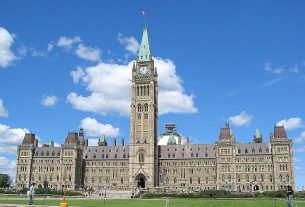
In a Communication published on 6 February 2024, the Commission recommended to cut EU net greenhouse gas (GHG) emissions by 90% by 2040, compared to 1990 levels, to set the path to climate neutrality in 2050.
This recommendation is based on a detailed impact assessment and also corresponds to the advice of the European Scientific Advisory Board on Climate Change (ESABCC) and the EU’s commitments under the Paris Agreement.
Scientists from the JRC provided analysis and scientific evidence that contributed to the impact assessment accompanying the Commission’s communication on the recommended target.
What would the socio-economic impact be?
Climate action is essential to deal with the existential threats and large economic costs of global warming. Taking action now towards 2040 will lead to substantial co-benefits, from improved health and environment to reduced fossil fuel imports, and lower vulnerability to external shocks.
Mitigation efforts can nevertheless also entail transition costs, and these could lead to a risk of increased inequality without the necessary support measures being in place. Scientists used the JRC-GEM-E3 applied general equilibrium model – that covers the interactions between the economy, the energy system and the environment – to carry out a macro-economic assessment of the socio-economic impacts of the main target options considered by the impact assessment.
This included the assessment of how different sectors would be affected, as well as how employment may change and how different income groups may be influenced by more stringent climate targets.
The modelling results showed that using revenues from carbon pricing would be sufficient to offset the burden on low-income households due to higher costs. Policy instruments such as the Just Transition Mechanism and the Social Climate Fund will remain necessary in future to address distributional concerns.
In addition, the macroeconomic modelling carried out by the JRC showed that the adverse effects of an energy price shock in a decarbonised economy in 2040 would be half as severe as the same shock happening today.
Scenarios for energy system decarbonisation
Climate neutrality will require the deployment of different clean technologies that are not yet fully mature as well as the development of new market/policy instruments. The JRC-developed modelling tool POTEnCIA was used to provide Commission services with a broad view of possible technological pathways to decarbonise the EU´s energy system.
Designed to provide a robust assessment of the impact of different policy futures on the EU energy system, the tool modelled various energy scenarios. These scenarios represent each of the main target options detailed in the impact assessment, as a part of the multi-model assessment that was conducted to increase the robustness of results, as opposed to relying on a single model.
The role of land use and forests carbon sinks
The EU carbon sink from land use and forestry contribute to the EU’s climate targets, which are expressed in net GHG reductions.
It has declined over the recent years, and stopping and reversing this trend requires implementation of climate-smart forest management, informed by improved and more timely monitoring of greenhouse gas fluxes. This is crucial for accurate tracking of progress towards the EU’s climate targets, where the role of forests has become – and is expected to remain – more prominent than ever before.
The JRC applied its forest carbon model for some of the developed scenarios to test the robustness of key assumptions made in the impact assessment accompanying the Communication on the 2040 climate target recommendation. This was particularly important considering that, to reach the recommended net GHG emission reduction target, land sector emissions need to be reduced, and the land carbon sink needs to be enhanced.
Demand for raw materials will increase
The transition will be an opportunity for the EU industry to be at the forefront of the net-zero race with a need for rapid deployment of various clean energy technologies. Together with the transition-driven decrease of fossil fuel import dependency, there will be an increase in demand for critical raw materials used for key clean energy technologies to ensure the achievement of the 2040 target.
It is therefore vital to secure undisrupted supply of these materials through resilient supply chains, which is the objective of the Critical Raw Materials Act, as any disruptions may put the achievement of the targets at risk.
And if we do nothing?
The JRC provided ample evidence of the cost of inaction, assessing the consequences of climate change with low level mitigation. The impact assessment also considered results from JRC studies, mainly from the PESETA IV assessment of the socio-economic impact from unchecked climate change, and what Europe could gain by taking action.
Related links
Communication on a recommended 2040 emissions reduction target
The role of forests in the EU climate policy: are we on the right track?
Integrated bioeconomy land use assessment: Land system responses to bioeconomy-related policies
Estimating future emissions from land use, land use change and forestry
Solutions for a resilient EU raw materials supply chain
Raw Materials Information System (RMIS)
EDGAR database: EU’s emissions keep falling, as post-COVID rebound in world emissions continues

